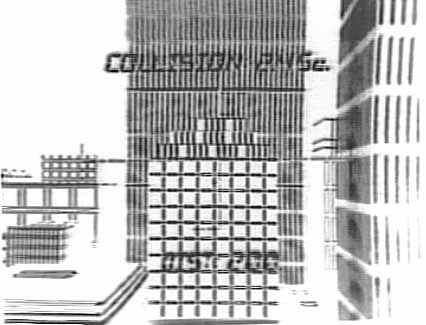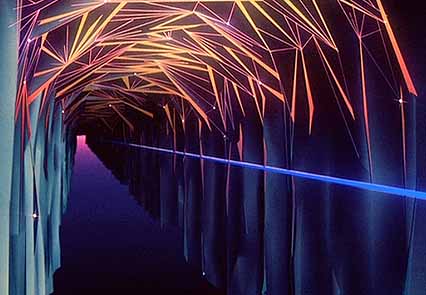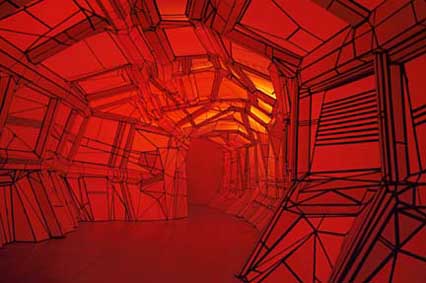Wireframe Aesthetics (Part 1)
Escape from New York, 1981. John Carpenter couldn't afford wireframe computer simulation for his low budget film, so a model of New York City was constructed for the sole purpose of being photographed and rendered as a negative image.

Escape from New York. Image as it appears in cockpit of Snake Plissken's glider.
 Still from Tron, 1982 (flipped vertically). Steven Lisberger's entirely computer-generated landscape set the standard for wireframe aesthetics. Critics often refer to this film with tongues in cheeks, but they do refer to it.
 Stephen Hendee, Inertial Field, 1998. Sculptor Hendee makes Tron-like walk-in environments with foamcore, electrician's tape, and backlighting, thus bringing the idea full circle, to a Carpenter-esque simulation of a simulation.
|
Wireframe Aesthetics (Part 1)
Escape from New York, 1981. John Carpenter couldn't afford wireframe computer simulation for his low budget film, so a model of New York City was constructed for the sole purpose of being photographed and rendered as a negative image.

Escape from New York. Image as it appears in cockpit of Snake Plissken's glider.

Still from Tron, 1982 (flipped vertically). Steven Lisberger's entirely computer-generated landscape set the standard for wireframe aesthetics. Critics often refer to this film with tongues in cheeks, but they do refer to it.

Stephen Hendee, Inertial Field, 1998. Sculptor Hendee makes Tron-like walk-in environments with foamcore, electrician's tape, and backlighting, thus bringing the idea full circle, to a Carpenter-esque simulation of a simulation.
- tom moody 3-28-2003 3:55 am